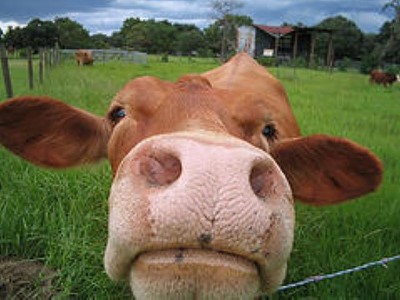A small group of environmentalists in Vermont are collecting urine with special toilets that separate no. 1 and no. 2.
 Eliza Barclay of NPR – The Salt writes, then they’re pooling the urine of the 170 volunteers in their pilot project (a quart or so, per person, daily) and eventually giving it to a farmer, who’s putting it on her hay fields in place of synthetic fertilizer. The goal is to collect 6,000 gallons this year.
Eliza Barclay of NPR – The Salt writes, then they’re pooling the urine of the 170 volunteers in their pilot project (a quart or so, per person, daily) and eventually giving it to a farmer, who’s putting it on her hay fields in place of synthetic fertilizer. The goal is to collect 6,000 gallons this year.
The logic driving this avant-garde project of the Rich Earth Institute, based in Brattleboro, Vt., is that it’s foolish and wasteful to part with the precious nitrogen and phosphorus that moves from the food we eat right through us — especially when farmers have to buy fertilizer at great expense to put those very same nutrients back into the soil.
What’s more, founders Abraham Noe-Hays and Kim Nace tell The Salt, once our urine enters the wastewater system, drinking water carries it to a treatment facility, where the nutrients become pollutants that can contaminate waterways and cause algal blooms, among other issues.
The idea of “pee-cycling” has much in common with the “night soil” tradition, as well as the newer practice of using biosolids, or sewage sludge that’s been transformed into soil amendment for farmers. Several wastewater treatment plants in the U.S. have been making and donating biosolids, which are regulated by the Environmental Protection Agency, to farmers for years. But the practice is controversial because some activists claim that even certified biosolids could contain harmful chemicals.d





(2)(1).jpg) “Several of the students who had just eaten a meal at the dining hall became ill,” she said. “We’ve told the university we can’t rule out the possibility that food was related to the outbreak, in addition to person-to-person transmission.”
“Several of the students who had just eaten a meal at the dining hall became ill,” she said. “We’ve told the university we can’t rule out the possibility that food was related to the outbreak, in addition to person-to-person transmission.” "We didn’t find any other common exposure. It’s strong evidence, but it’s not conclusive. It’s still not absolute proof because we didn’t get a hold of any of the raw milk to test."
"We didn’t find any other common exposure. It’s strong evidence, but it’s not conclusive. It’s still not absolute proof because we didn’t get a hold of any of the raw milk to test."